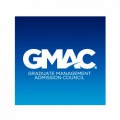 While applications at many graduate business schools across the country are up, the number of people sitting for the Graduate Management Admissions Test (GMAT) was down for the second straight year in 2014.
While applications at many graduate business schools across the country are up, the number of people sitting for the Graduate Management Admissions Test (GMAT) was down for the second straight year in 2014.
Data released by the Graduate Management Admission Council, the overseer of this benchmark test for graduate admissions, indicates 87,000 Americans took the exam between July 2013 and June 2014, a 33% drop since 2009’s 130,000.
Although the decline in test takers appears sharp, GMAC points to a number of factors that explain the drop while demonstrating the continued relevance of this graduate level option for students seeking to launch business-related careers or advance the ones they already have.
Beating the Punch
One of the driving factors behind the decline in test takers, GMAC points out, was the addition of the integrated reasoning section to the test in 2013.
This section added a new level of difficulty, calling on students to answer questions related to graphics interpretation, two-part analysis, table analysis and multisource reasoning.
The end result was a surge in the number of test-takers in 2012 as students rushed to beat the inclusion of the new section.
Enrollment is Up
The number of Americans taking the GMAT doesn’t reflect on the continued popularity of graduate business programs.
GMAC surveyed 469 MBA programs to glean data about enrollments and discovered an overall application increase of more than 60% at those schools. In 2012, only four out of 10 schools had an increase in applications.
The rise in applications is due partly to a strong push by graduate schools to bring in international students. GMAC notes that while applications are up since 2012, only about 22% of schools saw their domestic applicant numbers rise.
Also, some top schools don’t require students to take the GMAT, which could impact enrollment numbers being up while GMAT numbers are down.
Explaining the Decline
Economic factors in America are likely the culprit for a decline in the number of GMAT takers. History, GMAC spokesman Rich D’Amato, shows that when the economy is strong, the employed tend to want to stay that way by focusing on the careers they have while the unemployed are hopeful their situations will change fairly quickly.
“As an economic begins to show some signs of difficulty, and especially in the job market, GMAT test taking tends to rise,” D’Amato explains.
With economic indicators in America now pointing up, the demand for the test is down, but enrollment at graduate business schools indicates continued popularity and viability of this graduate-level track.





